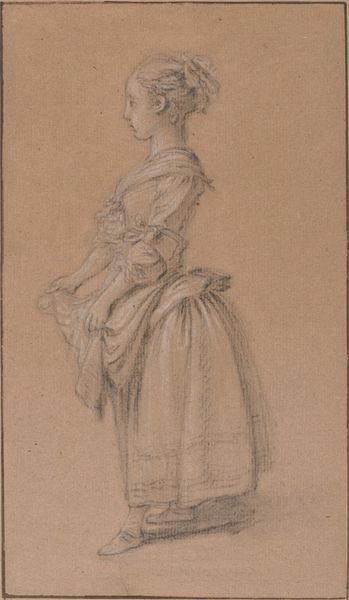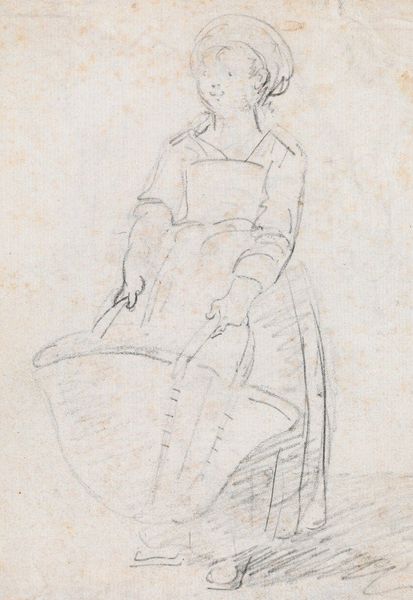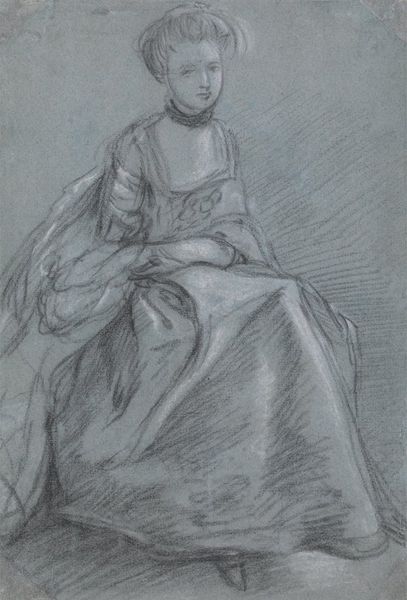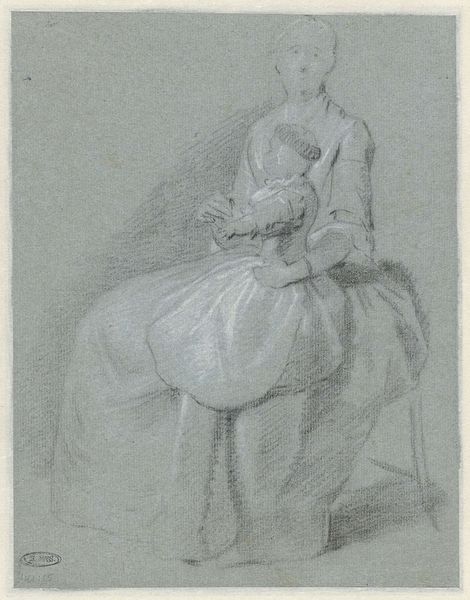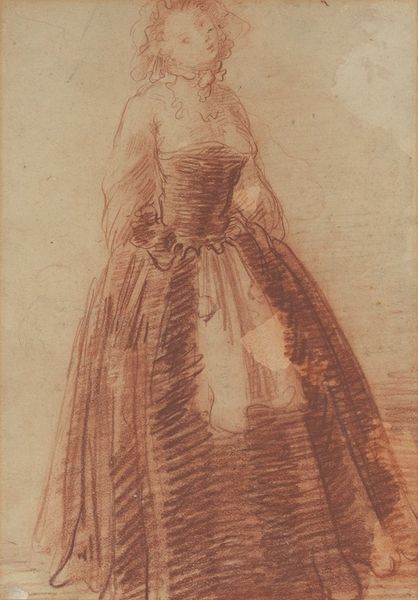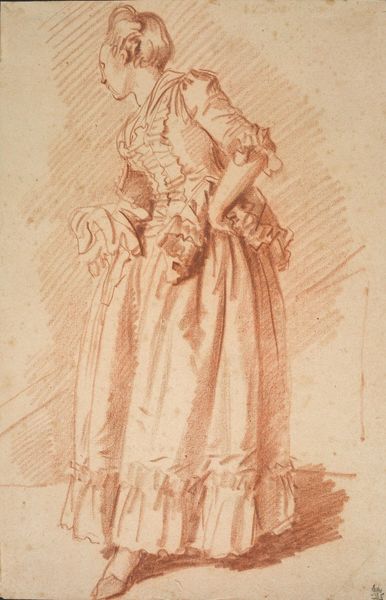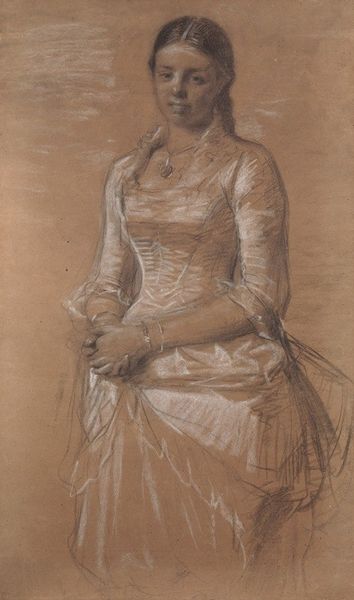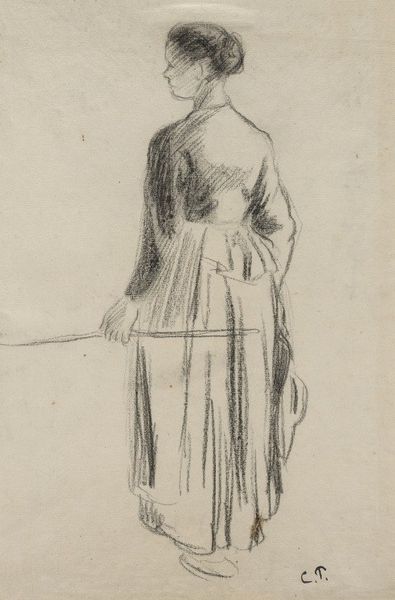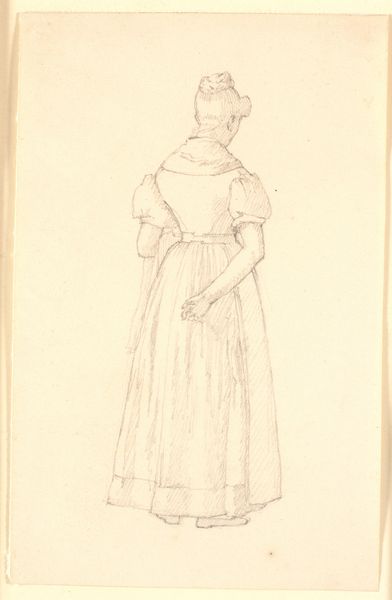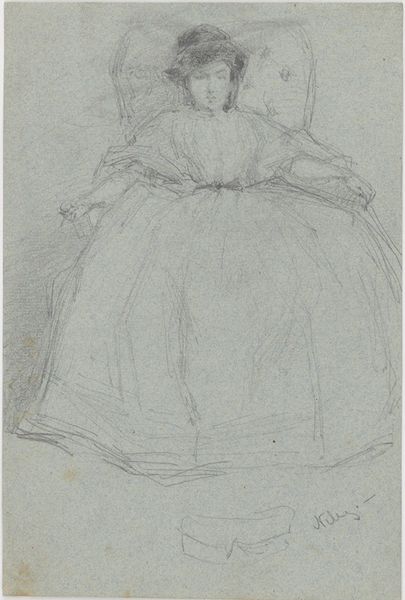
drawing, pencil
#
portrait
#
drawing
#
amateur sketch
#
light pencil work
#
pencil sketch
#
figuration
#
personal sketchbook
#
idea generation sketch
#
sketchwork
#
detailed observational sketch
#
pencil
#
portrait drawing
#
pencil work
#
rococo
#
initial sketch
Dimensions: height 297 mm, width 183 mm
Copyright: Rijks Museum: Open Domain
Curator: This is "Staand meisje," or "Standing Girl," a pencil drawing attributed to Tibout Regters, dating approximately from 1727 to 1768. Editor: There's an immediate fragility and tenderness to this piece. The sketch-like quality, with its soft lines and lack of bold contours, creates a sense of quiet observation. It's quite subtle. Curator: The Rococo style is evident in the figure's dress and pose. We can consider the social context, the role of portraiture during that time, and how such sketches served perhaps as preparatory studies for more formal works or even records within an artistic practice. Editor: Indeed. Consider the compositional choices: the off-center placement, the figure almost blending into the background, these elements further the sense of informality. Note how the hatching creates volume and form, a very delicate balance between representation and abstraction. Curator: The politics of Rococo portraiture often revolved around depicting the sitter in a flattering light. Yet, here, there's a raw and less posed quality, isn't there? Is Regters using the figure's direct gaze, though simple, to engage the viewer? Editor: Absolutely, and that lack of polish contributes to the sketch’s authenticity, setting it apart from typical representations of status within formal portraits of the era. I would agree; there's an unpretentious intimacy with this pencilwork, very raw. Curator: It's thought this work existed within Regters' sketchbook. Sketchbooks themselves represented sites for free inquiry. This work and its potential location raise fascinating questions regarding the art marketplace in 18th century Holland. Editor: Ultimately, viewing such a quick study from within a private context enables one to imagine encountering Regters at work. It evokes the era’s shifting approach to the function and creation of imagery. Curator: Indeed. Studying the interplay between light and shadow gives insight into how artistic vision finds its place in wider Dutch culture. Thank you for your comments on this thoughtful artwork, it enlivens the formal components of art. Editor: My pleasure.
Comments
No comments
Be the first to comment and join the conversation on the ultimate creative platform.
